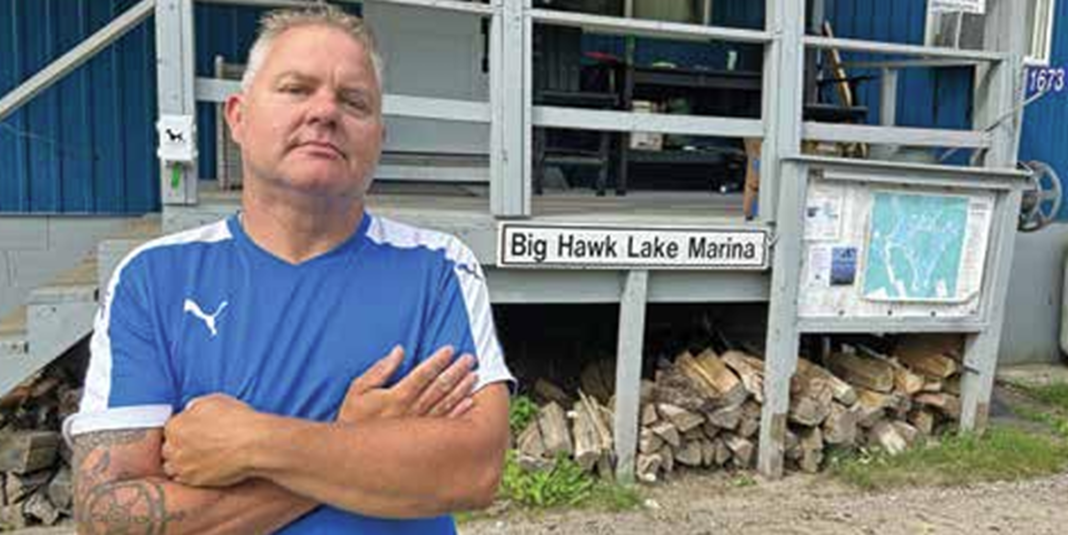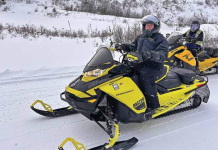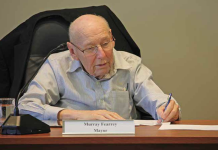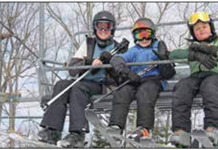Algonquin Highlands council has opted to reduce the speed limit and install speed bumps along the busiest section of Big Hawk Lake Road, from the log chute to the marina, despite recent traffic data suggesting at least 85 per cent of drivers travel under the current 50 km/h threshold.
In July, the township heard from Chris Ewles, general manager of Big Hawk Lake Marina, who pitched lowering the speed limit, establishing a community safety zone and installing speed bumps, cameras, a stop sign and pedestrian crossings to alleviate safety concerns.
Ewles told council he has witnessed many near misses involving vehicles and pedestrians due to speeding and dangerous driving over the past 18 months.
Public works director Adam Thorn, at a recent meeting, said that, in response to those concerns, municipal staff had two digital speed radars on the road from July 29 to Aug. 5 – one just past the log chute parking lot and the other by the marina.
The first sign clocked 872 inbound vehicles, with 90.14 per cent traveling at or under the posted limit, and 899 outbound vehicles, of which 84.98 per cent were moving at an acceptable speed.
At the second camera location, only two of 716 inbound vehicles (99.71 per cent) and one of 737 outbound vehicles (99.86 per cent) exceeded the 50 km/h limit. Most, at 77.23 per cent, were travelling less than 30 km/h, with 19.97 per cent travelling between 31 and 40 km/h.
“I was very surprised by the data, especially around the marina. That 99 per cent of the public are travelling the speed limit or less than, that’s really good to see. I don’t know how you can get much better than that in a rural area,” Thorn said.
He noted the devices clocked between 102 and 125 vehicles per day on average, a significant reduction from the 225 vehicles per day recorded during a 2017 study.
Mayor Liz Danielsen suggested the issue was more about congestion than speed.
“This is something where we have traffic moving in all directions, a public landing, a beach,” Danielsen said, expressing her preference to reduce the speed limit. “We do have a responsibility for the safety of our residents.”
Earlier in the meeting, council heard from Shelley Fellows and Jim Anderson of the Halls and Hawks Lakes Property Owners Association (HHLPOA), who said about 300 people had expressed concern this year over risks to public safety, personal property and vehicles due to congestion and a lack of parking on the lake system.
They asked council to improve parking options – Danielsen said the township has considered adding to the 28 angled spots by the marina, with Thorn saying a proposed redesign of the road could see up to 80 new spots created between the marina and the log chute.
“The road is supposed to be two lanes wide – it will be once it’s rebuilt. Right now, with the parking, it’s only a lane-anda-half wide, and obviously worse in the wintertime,” Thorn said.
Policy needed
Following a hearty discussion, council opted to drop the posted limit to 30 km/h from the log chute to the marina, while also calling on Thorn to investigate installing two seasonal speed bumps in front of the marina building.
“While I’m happy to see the driving stats, it’s clear there’s still fear in the community,” Dailloux said.
Danielsen added, “people are doing the speed limit, but maybe it’s not the right speed limit for the area. It’s truly congested compared to a lot of other areas. It’s rather unique.”
Thorn said the speed limit around speed bumps will likely have to drop to 15 km/h, while he confirmed staff will install signs warning drivers about potential pedestrians ahead.
To ensure fairness and consistency, Thorn recommended council develop a policy for changing speed limits.
“We need to have a wholesome conversation about thresholds and what triggers the response to lower a speed limit. Do we do a traffic assessment like this, where we put signs up, pull the data and anything below 75 per cent we can start talking about it? Should that number be 85 per cent? We need some kind of agreement,” he said.





